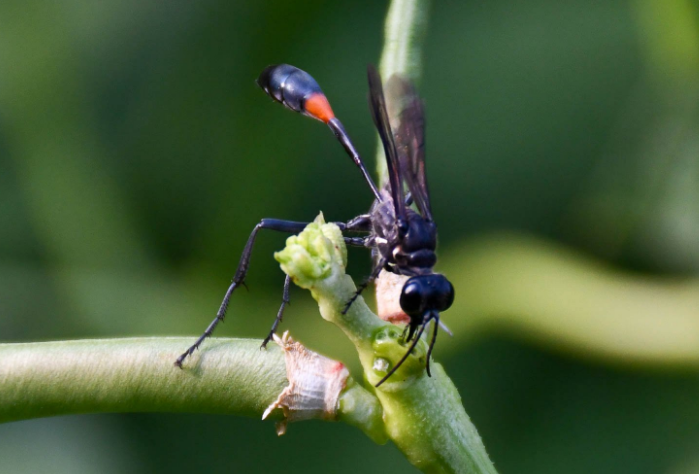I planted the peas in the spring and they grew profusely, the first purple flowers appearing, followed by red pods and green peas. I ate the first few handfuls of seeds from the garden raw. I guess you could say it was an acquired taste – rustic and fresh, but without the bacon grease we usually use for flavour. And, in the first mess, that’s what we did.
 But what are they? Sure, they’re my grandfather’s peas and heirlooms, but I hate not having a variety name. Greg Grant and I compared possible varieties such as Black Eyed, Claude and Purple Shell, but none of them stuck based on flower colour, seed pod and seed colour.
But what are they? Sure, they’re my grandfather’s peas and heirlooms, but I hate not having a variety name. Greg Grant and I compared possible varieties such as Black Eyed, Claude and Purple Shell, but none of them stuck based on flower colour, seed pod and seed colour.
What amazes me about 16 year old seeds germinating and growing successfully is the number of insects the plants attract. When I planted them in Tennessee a few years ago, I don’t remember seeing an overabundance of them fluttering and stirring in front of me now as I walked down the row. Gulf mussels, grey-haired striped wasps, American hornets, winged red velvet wasps, eastern yellow-horned spider wasps, black skippers, northern cloud-winged wasps, and cloud skippers were some of the ones I could recognise. Even in the fallen leaves below, I found stinging insects waiting for their prey. They come because cowpea leaves and inflorescences have extrafloral nectaries. Most species with extrafloral nectaries attract beneficial insects, thus reducing pests on the plant. And, on such a harsh summer day, when much of the garden is desert, I’m glad these insects found sweet nectar in my pea field oasis.



